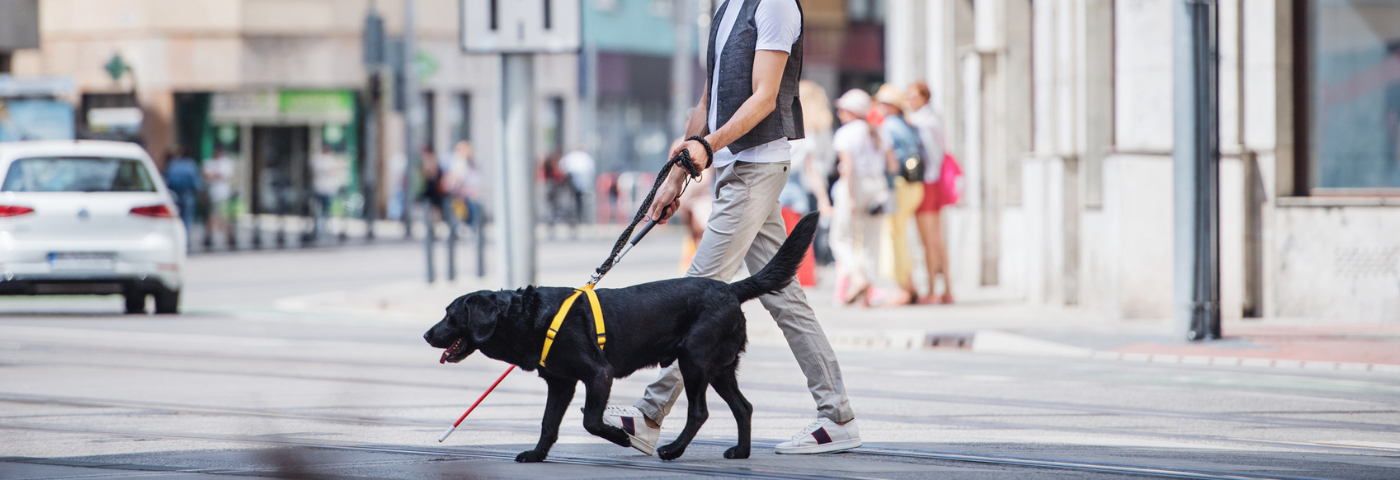* By Mellina Hernandes, Tourismologist and creator of 4 Patas pelo Mundo
Sounds, smells, tastes, touch, are some of the sensations that are explored by a blind tourist when visiting a new destination.
There are more than 6.5 million visually impaired people in Brazil, but is the tourism sector prepared to cater to this public?
In the same way that we have Business, Adventure and Experience Tourism, we also have Accessible Tourism, which is not yet very well known, but which is expanding more and more both throughout Brazil as well as throughout the rest of the world.
And what is Accessible Tourism?
Accessible Tourism involves the inclusion of people who have disabilities or physical limitations in tourist activities, facilitating easy access to places and establishments.
When we talk about disabilities and limitations, we include people who have motor, physical, mental, hearing and visual difficulties as well as pregnant women, the elderly, the obese and those with dwarfism.
I remember when I was doing a course in Tourism back in 2005, at that time the issue of Accessible Tourism was not covered in any subject. Nowadays the scenario is a very different one and the subject is increasingly being discussed in universities, as well as at various meetings and events aimed at the tourist sector.
Disabled people have the same right to go to places as non-disabled people. As well as having a right to receive quality service.
Accessible Tourism is an opportunity for inclusion and generates great economic value for establishments.
The city of Socorro, in the interior of the State of Sao Paulo, is an international reference in Accessible Tourism. In 2017 it was awarded the diploma “Honourable Distinction – Municipal Management”, being recognized for its accessibility planning for tourists with disabilities or reduced mobility.
One major success story is the Parque dos Sonhos hotel chain, which is a reference in accessibility in tourism.
According to the information they provided, they went from a figure of 152 people with disabilities received in 2005 to one of more than 7,000 in 2019, this at just one of their 4 units, the Hotel Fazenda Campo dos Sonhos.
Upon visiting any Hotel in the chain, tourists with disabilities enjoy accessibility both in terms of accommodation as well as in the adventure activities.
90% of the accommodations have been adapted.
For tourists with visual impairments, in addition to the architectural structure, such as tactile flooring, maps and menus in Braille, they offer a differentiated service, with an employee providing all the support that the person needs, helping in the restaurant and in the activities offered.
Inclusion promotes access to a relatively unexplored niche of customers, thus making these tourists loyal customers and attracting other people by means of referrals, because if they are well served, they will tell their friends and family members. This generates the best type of publicity, word of mouth.
Usually when one talks about accessibility, the most common thing is to think about architectural accessibility such as ramps, bars, elevators, tactile flooring, accessible bathrooms and rooms. But we cannot limit accessibility just to this, we also need to think about barriers in terms of attitudes, and have people who are trained to serve tourists with disabilities well, in addition to having accessible tourist material.
More and more destinations are concerned with providing tourists with disabilities with a good service.
By comparison with first visit to WTM Latin America in 2017, in 2022 I noticed that in 2022 a greater number of destinations were concerned about inclusion in Tourism, with some of them resuming accessibility projects and others already implementing them, mainly aimed at tourists with visual impairments.
In order to offer a good tourist service for visually impaired tourists, it is necessary to have a scale model and tactile flooring; audio description; images in relief; objects to be touched, in the case of exhibitions and museums; and qualified employees to guide and pass on the information.
Adapting and enabling destinations, tourist attractions, parks, hotels and service establishments in general, generates a huge social gain. The interaction and inclusion of people with disabilities fosters a better quality of life and equal opportunities, which is everyone’s right.
Brazil is making a lot of progress on this front, many are still limited to accessibility that is just aimed at people in wheelchairs, but increasingly people with visual impairments are being noticed and are receiving quality service in tourism.
“Accessibility is a key element of any responsible and sustainable tourism policy.” – Taleb Rifai, Secretary General of the World Tourism Organization (WTO)
Accessibility is not a favour, it’s a right!
The opinions expressed in this text are the author’s opinion and do not necessarily reflect the position of WTM Latin America.

